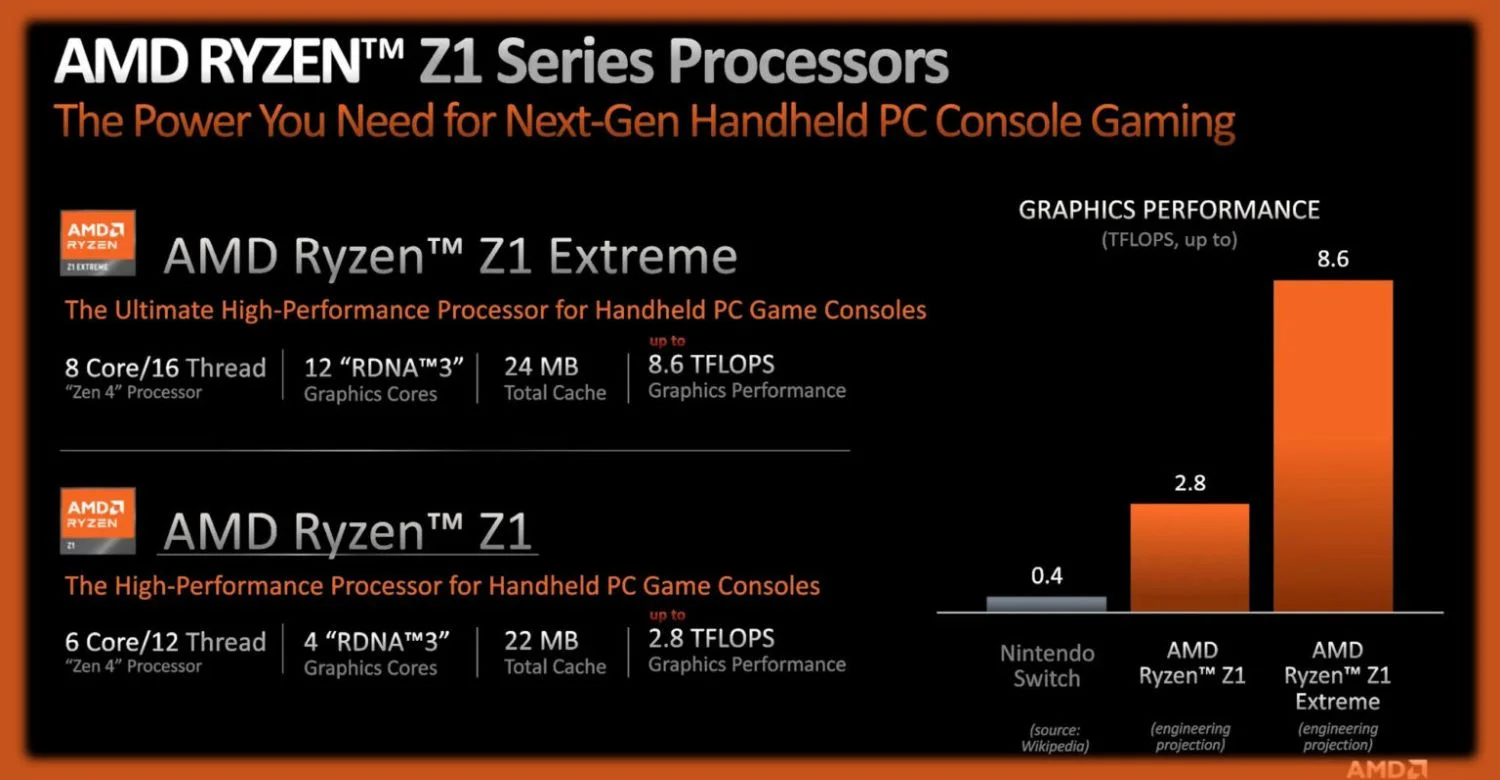When the ROG Ally was initially announced, little was known about the console. Now, however, we can actually shed some light on what exactly you can expect from this portable gaming machine. And we’ll start with the very heart that powers the Ally, custom-made AMD Ryzen Z1 APU. The ROG Ally can be fitted with one of AMD’s new Ryzen APUs: a standard Z1 or the more powerful Z1 Extreme. On paper, the Ryzen Z1 offers a 6-cores, 12-threads configuration, features four AMD RDNA3 Compute Units, and a Cache size of 22MB. For the Z1 Extreme, its core and thread count stands at 8-cores, 16-threads, has triple the RDNA3 Compute units, and a slightly bigger cache of 24MB. As these are also Zen 4-based CPUs, that also means that they are built around the smaller and more powerful 5nm process node. In terms of performance, the Z1 gives up to 2.8 TFLOPS of graphics prowess, while the Z1 Extreme is more than three times more powerful with 8.6 TFLOPS of power. That last number is one that ASUS uses to repeatedly reaffirm throughout its presentation material of the ROG Ally that it will have “double the performance” of the Steam Deck. When set at 15W of power, you’re looking at about 50% better performance. Moving on, the ROG Ally features a 7-inch Full HD display, with a 16:9 aspect ratio and a high refresh rate of 120Hz, and a peak brightness of 500 nits. The internal battery is rated for 40WHr, which is more or less the same as the Steam Deck but again, given the more up-to-date hardware, ASUS expects its console to be more power efficient than the competition. For cooling, there’s a dual-fan configuration called ROG Zero Gravity. As for the controller layout, the ROG Ally clearly uses the Xbox controller as a template and you can see it in the orientation of the joysticks and D-Pad but does also features several proprietary buttons at the edges of the display. Around the back, there are two paddle buttons, one on each side, which is a little quirky, given that the Steam Deck offers four of them. Oh, and ASUS has seen fit to provide this console with Wi-Fi 6E connectivity. Up at the top, the ROG Ally has the power button cum fingerprint scanner, volume rocker, a USB4 port, a microSD card slot, and of course, the XG Mobile dock that allows it to connect to ASUS’ identically named eGPU. For another matter, the Ally runs on Microsoft’s Windows 11 OS, which means you don’t have to worry about compatibility issues. Lastly, it weighs in at 608g. As for pricing, ASUS still plans on making that crucial detail of the ROG Ally known only on 11 May but the brand has hinted that it will be priced aggressively to the Steam Deck. That means the magic number it has to beat is US$700 (~RM3122). In any case, we should be getting our paws on the console itself soon, so keep an eye out for our hands on. (Additional sources: Engadget, AMD, Videocardz)

